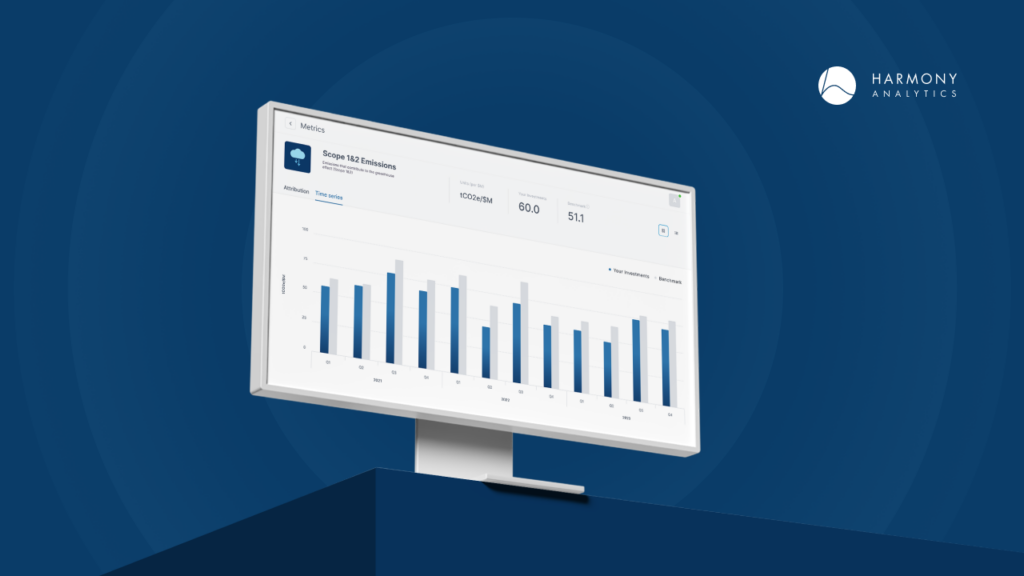
Increasingly, countries and regions are implementing climate disclosure rules. Notable examples include the Corporate Sustainability Reporting Directive (CSRD) of the European Union and the Paris agreement of 2016. As additional jurisdictions consider their own climate disclosure approaches, capital owners may find the regulatory landscape challenging to navigate.
Harmony provides capital owners tools to cut through the confusion and evaluate their carbon emissions data. The Harmony platform enables contextualization of emissions across a portfolio and can help capital owners track their evolution over time, in line with the Global GHG Accounting and Reporting Standard. Each analysis type provides a different lens to view portfolio emissions data and gain unique insights.
DETERMINE RELATIVE PERFORMANCE
Carbon Emissions
The total volume of carbon emissions, per million dollars invested.
Insights: Used when comparing portfolios to one another and/or to a benchmark to understand the carbon emissions per dollar invested in a portfolio.
Financed Emissions by EVIC
The emissions (emissions/$million invested) with Enterprise Value Including Cash
Insights: Used to assess the carbon exposure of portfolio investments relative to enterprise value. It Identifies potential stranded assets and carbon transition risks.
Weighted Carbon Intensity
The volume of carbon emissions per dollar of sales generated by portfolio companies, apportioned based on portfolio weights.
Insights: Used for portfolio decomposition and attribution analysis. Unlike the Portfolio Carbon Intensity, carbon emissions are apportioned based on portfolio weights / exposure, rather than the investor’s ownership share of emissions or sales.
Temperature Rise
Measures the projected increase in global temperature associated with the emissions trajectories of a portfolio.
Insights: Used to align portfolios with the Paris Agreement’s goals to limit global warming to well below 2, preferably to 1.5 degrees Celsius. It can guide the divestment from sectors and holdings that are making the most significant contributions to global change.
Net Zero Targets
Goals set by companies within a portfolio to reduce their greenhouse gas emissions to net zero by a specific date.
Insights: This is a tool for investors to monitor and ensure that companies follow through on their public commitments to carbon neutrality.
Harmony Analytics and Your Business
For more information on how these climate disclosure rules could affect your industry, contact our team and find out how we can help you stay ahead in the evolving landscape of corporate disclosures.
